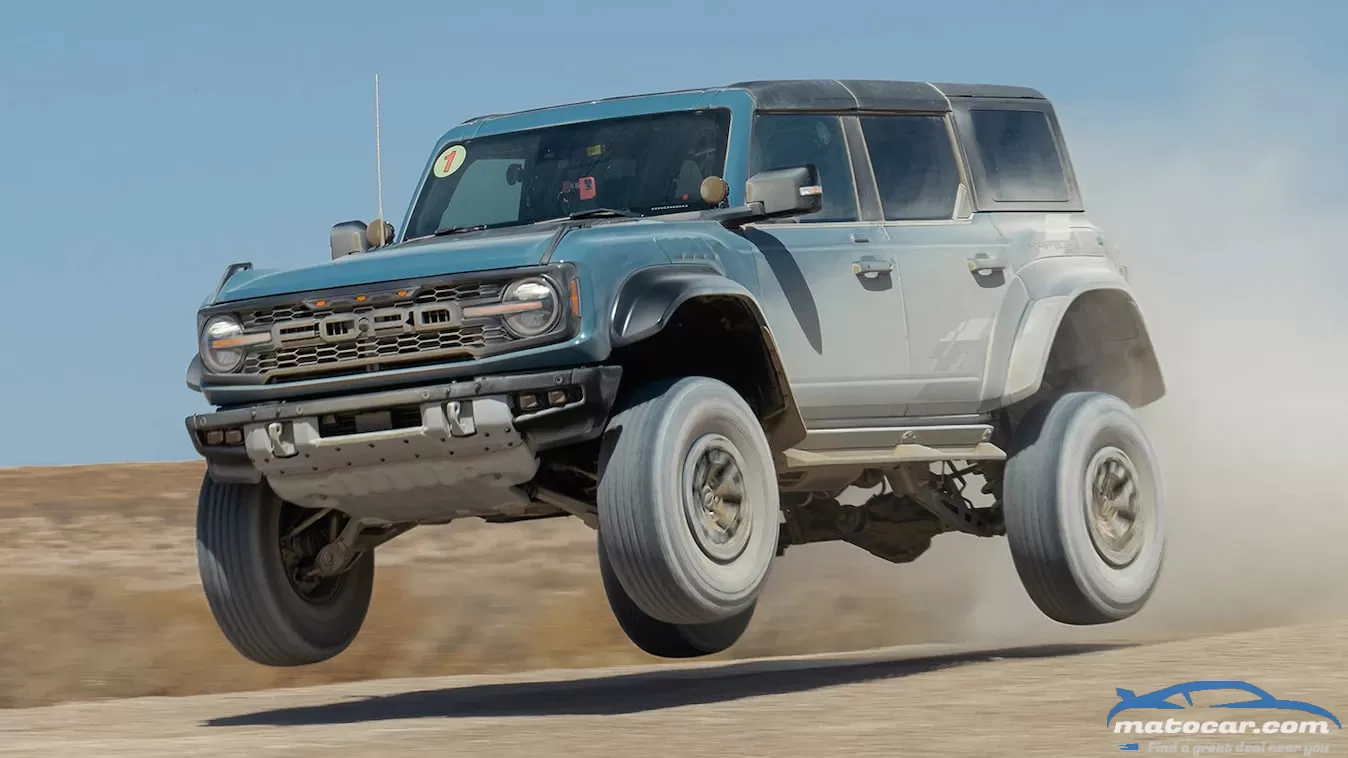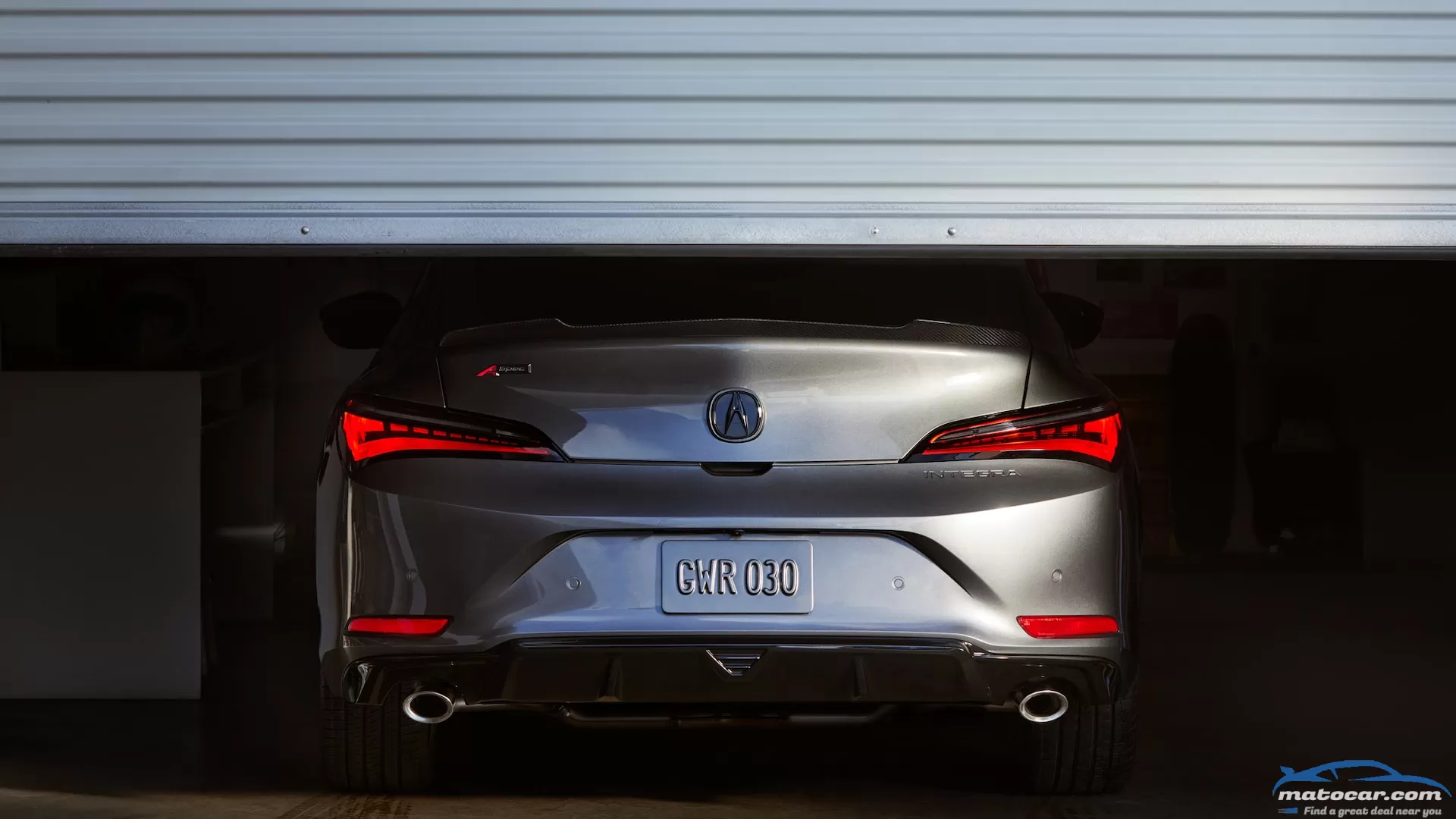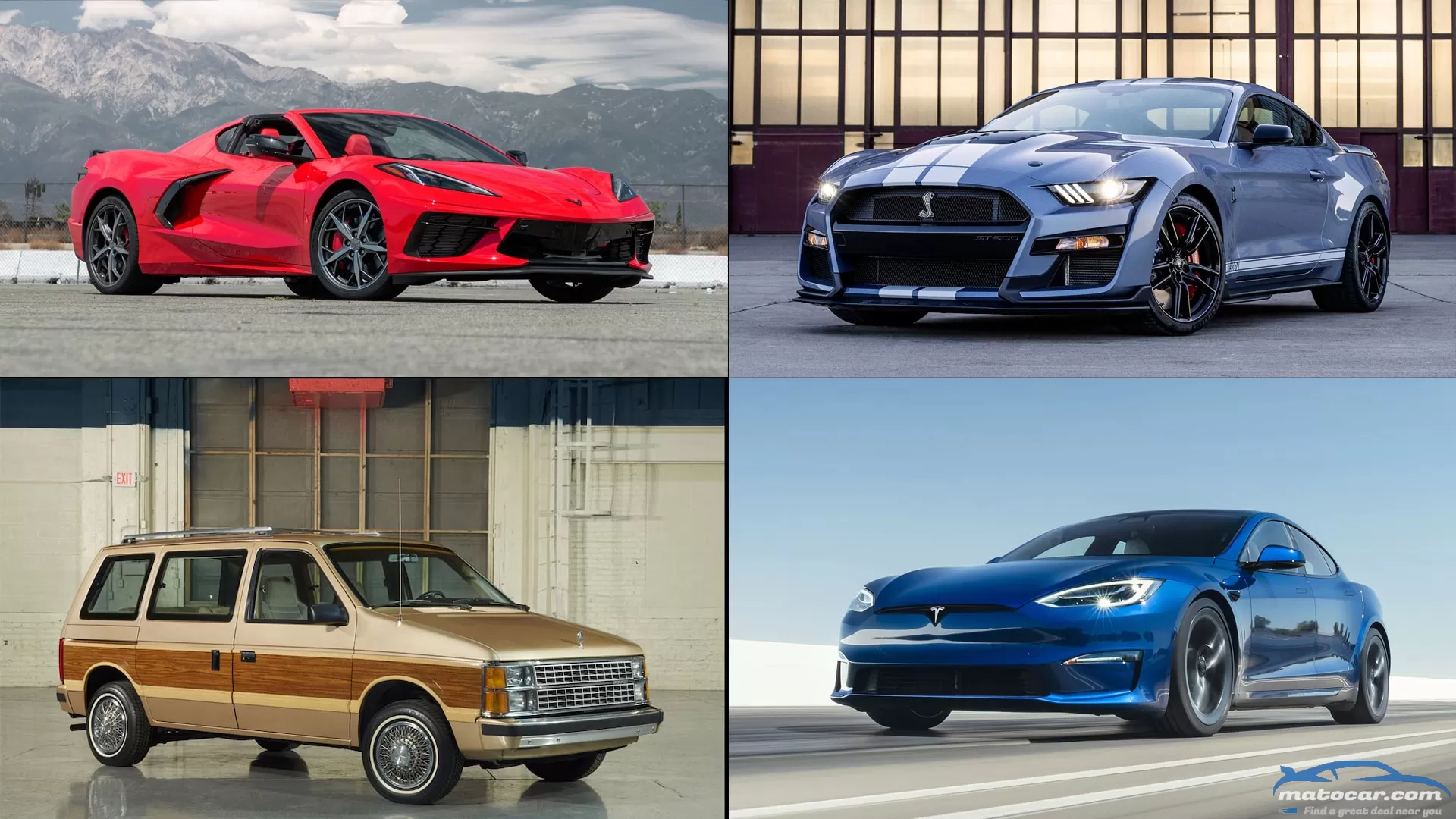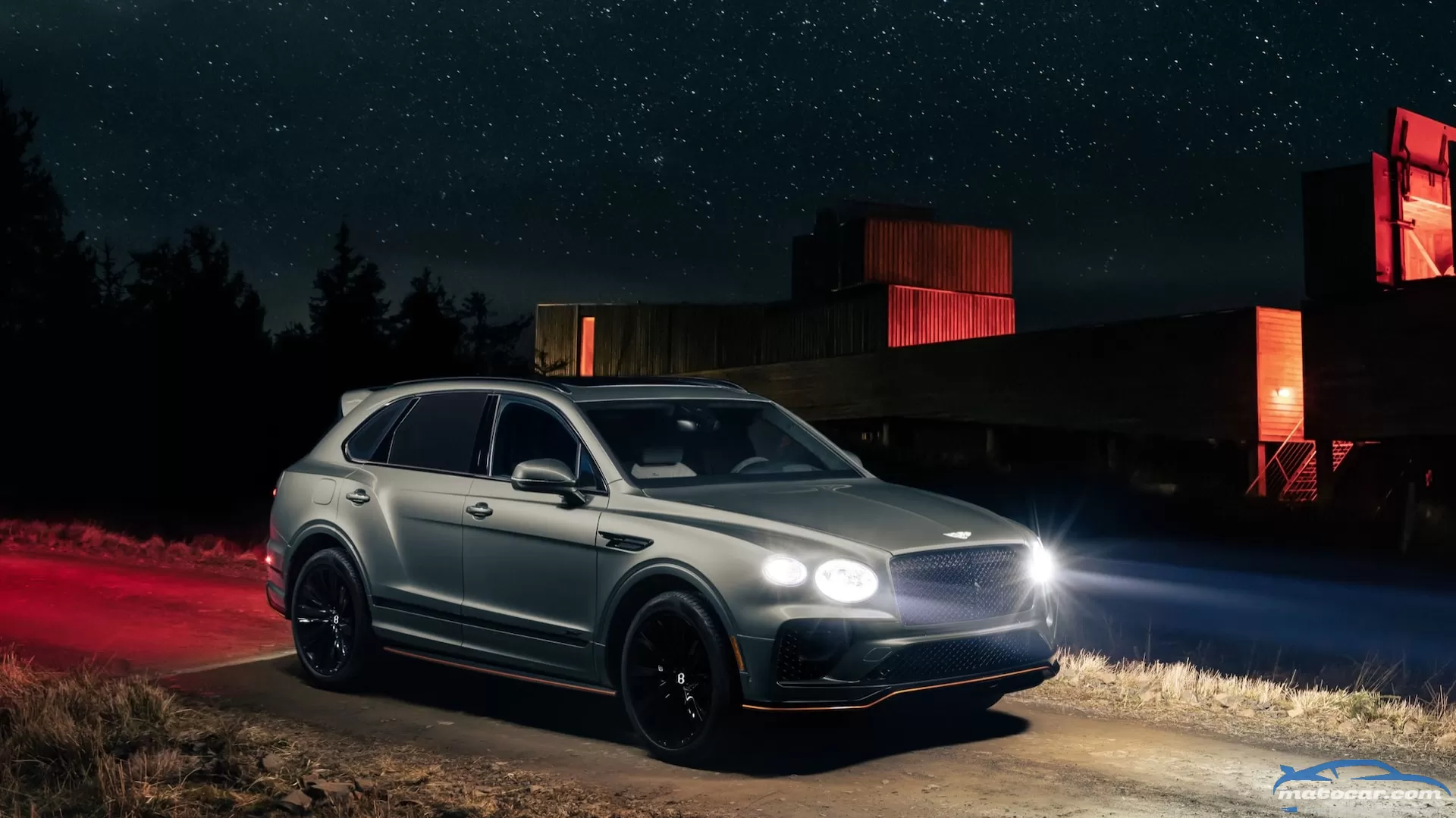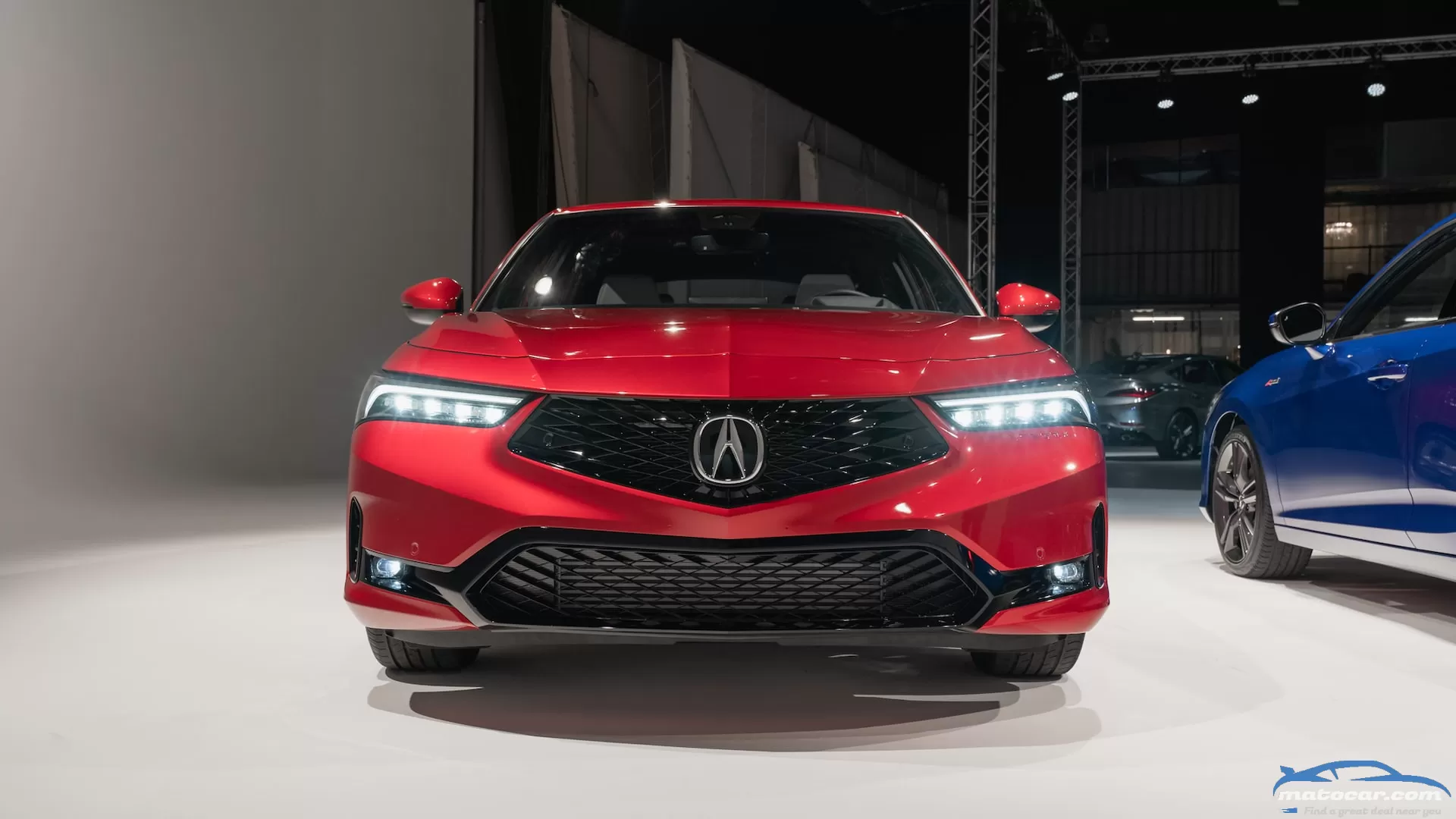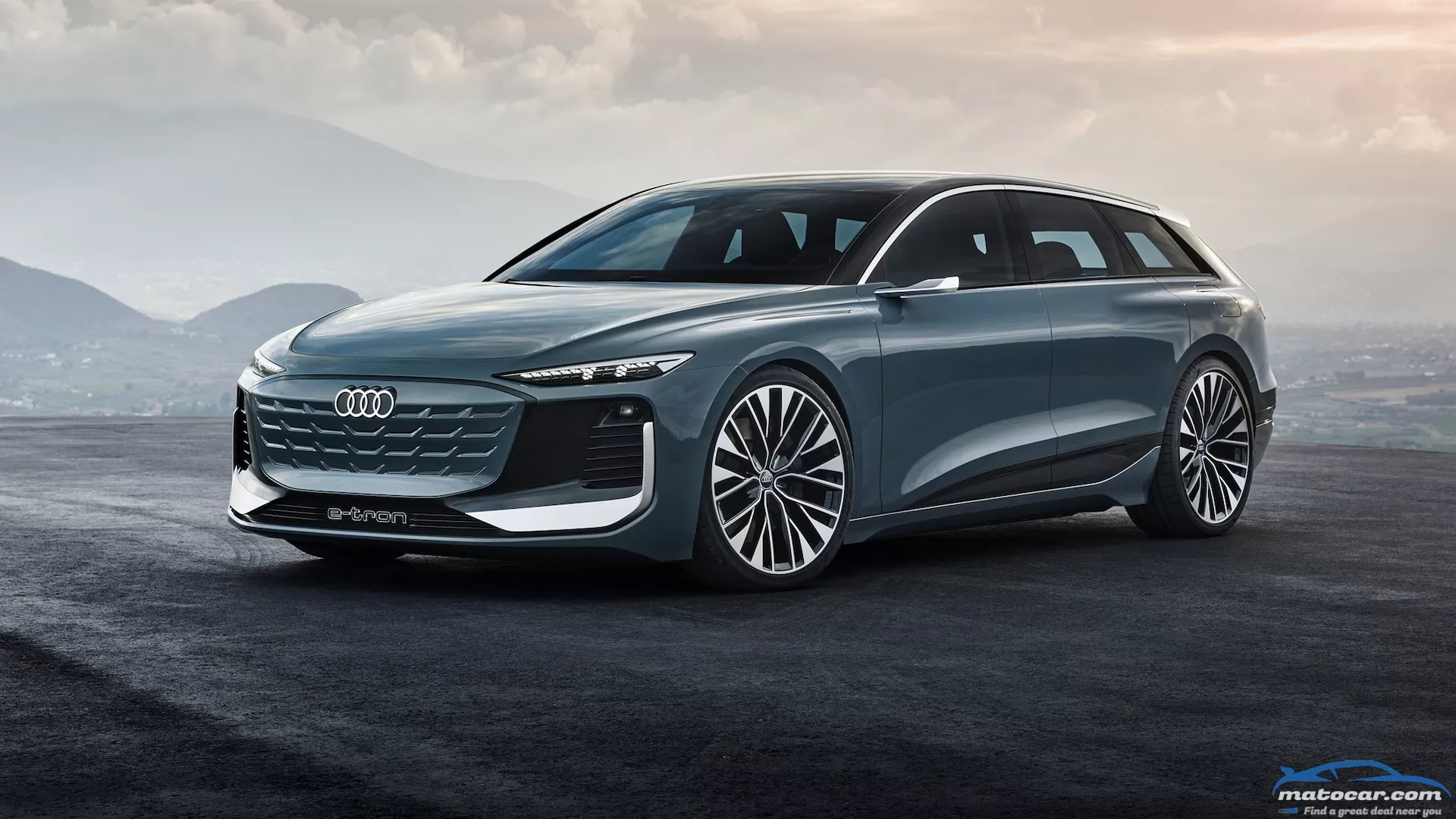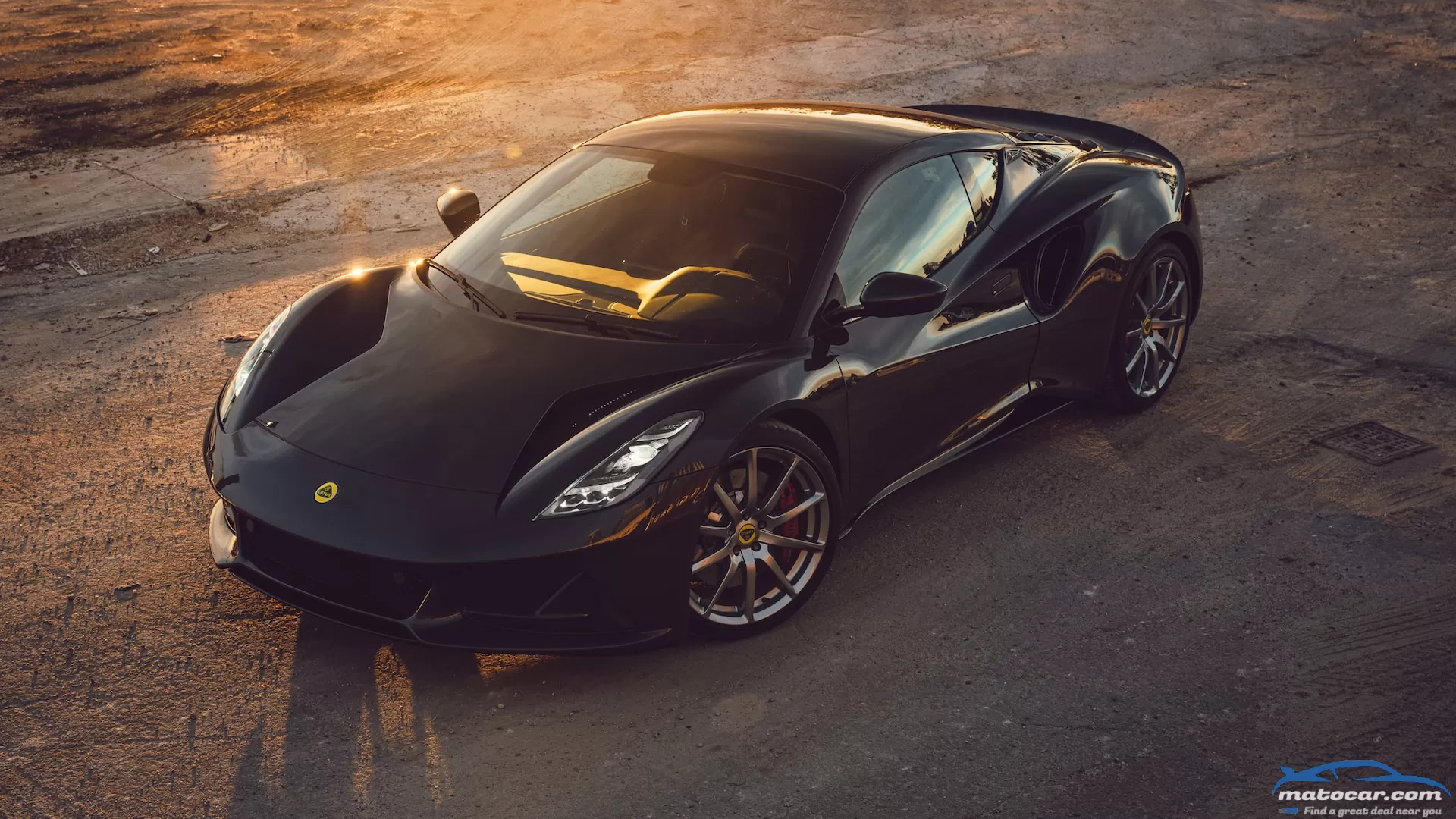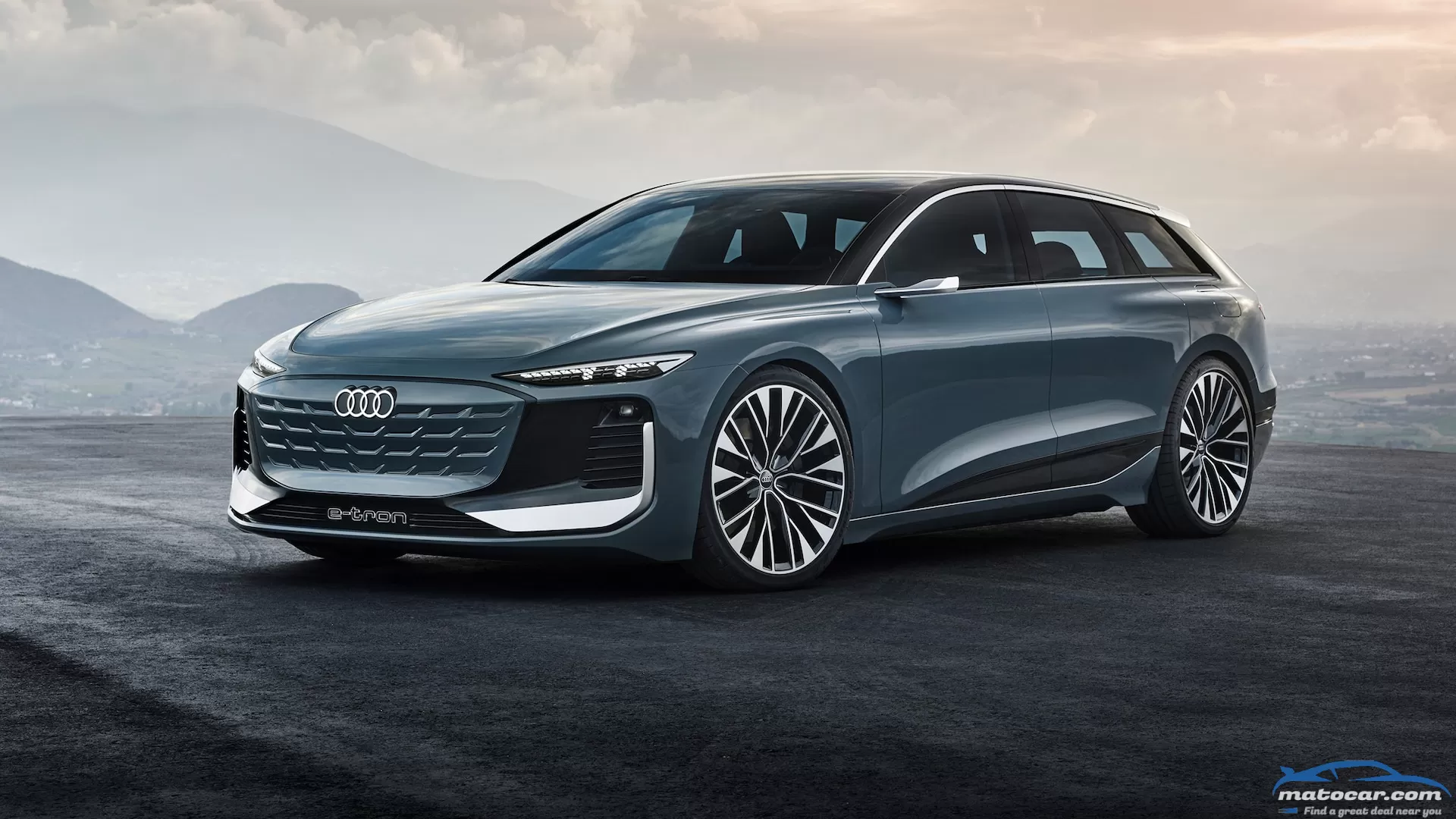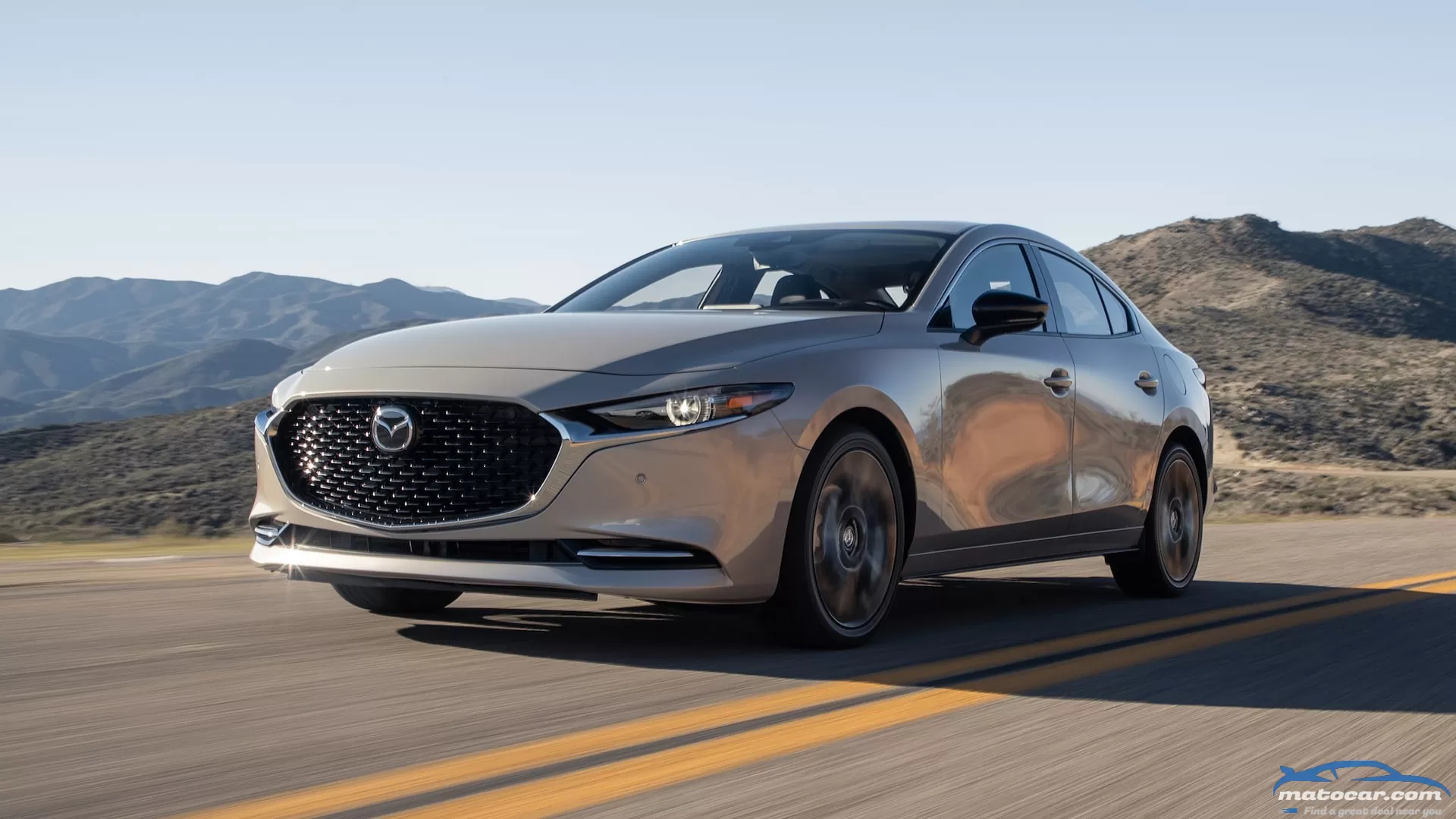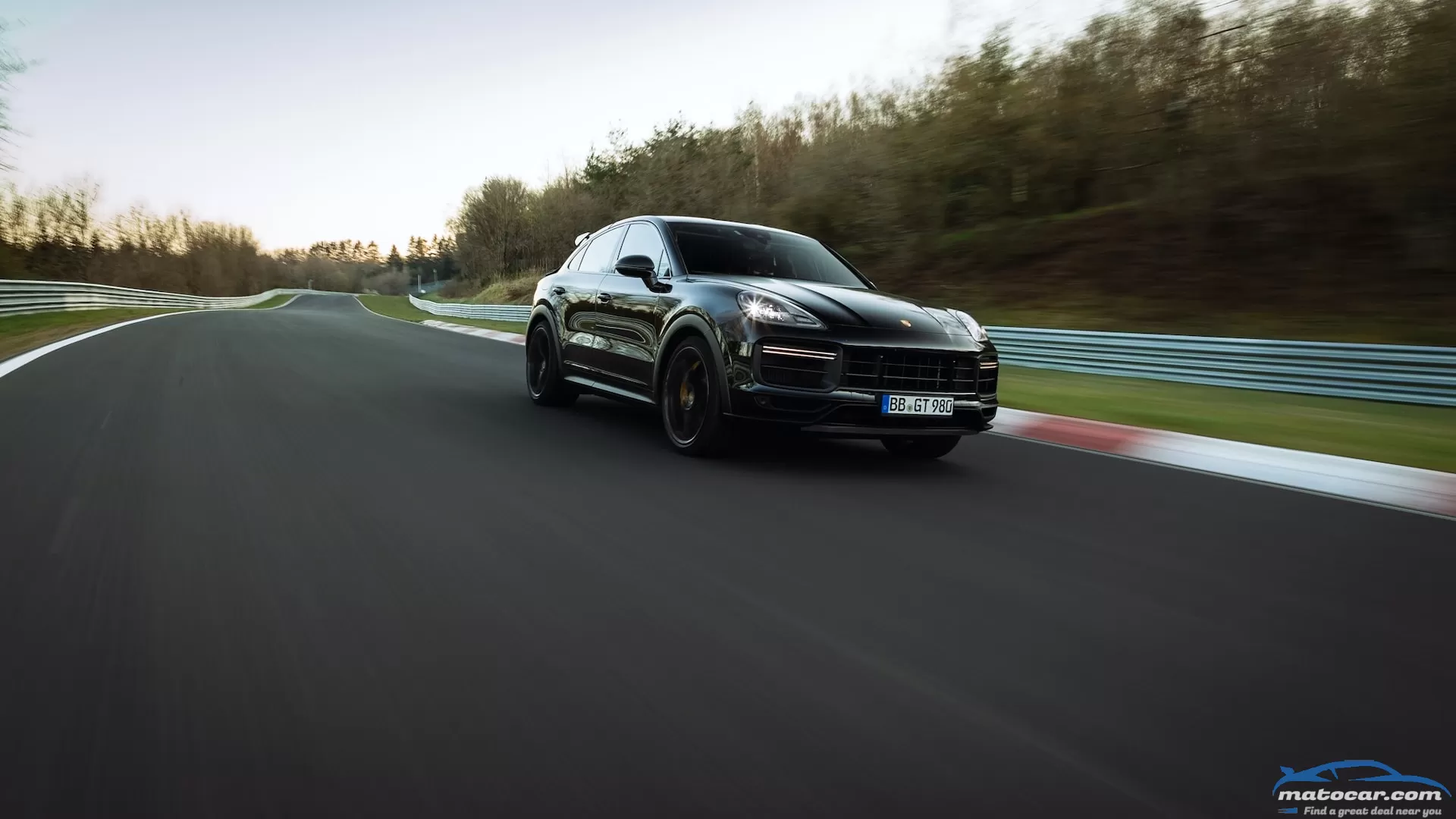ford bronco Full OverviewYou play chess? Good, because then you know the most powerful piece on the board, the one with all the moves, is the queen—not the king. This admittedly forced chess metaphor serves another purpose. Since Ford resuscitated the Bronco, Dearborn and Jeep are now locked in a fierce battle for off-road SUV supremacy. Between the various trims on offer, we almost have enough "pieces" to field a chess game; according to each model's website at the time of this writing, buyers have eight Broncos and 12 Wranglers to choose from. With the launch of the new 2022 Ford Bronco Raptor, not only has FoMoCo significantly expanded the Raptor family, it's also officially rolled out its biggest weapon to date in this fight. We've admired and loved the F-150 Raptor since its debut nearly 15 years ago. Does the Raptor formula work on an SUV? Or, sticking with chess, are we talking about a new queen? Keep reading.What Makes a Braptor?Ford changed many things in going from Bronco to Braptor—yes, I insist on calling it Braptor, the best nickname since "Fiata. " The most important of these changes just might be the 3.0-liter twin-turbo EcoBoost V-6 found under the new, air-extractor-equipped hood. Compared to the 2.7-liter version found in the regular Bronco, power rises from 330 hp (or 315 hp here in California with our lousy 91-octane gas) to 418, and torque goes from 415 lb-ft (410 in the Golden State) to 440 lb-ft. Ford squeezed more power out of the 3.0-liter, which is also found in the Explorer ST and Platinum, by reducing induction and exhaust losses, as well as by fitting larger turbochargers. The 10-speed transmission has been reprogrammed for Bronco Raptor duty, and the transfer case has been beefed up.The heavy lifting from an engineering point of view, however, involved the suspension. Like the pickup truck Raptor, the SUV version has been significantly widened—mostly at the tires—to the tune of nearly 10 inches (!) each front and rear. That's nuts. To achieve that sort of girth, new shock towers were fitted all around, as well as wide, Braptor-specific control arms. The new front axle is a Dana 44 AdvanTEK, and there's a big ol' live Dana 50 Heavy Duty AdvanTEK out back. Raptors have always come with a set of trick Fox internal bypass shocks. Ford calls this system HOSS 4.0, and in addition to enabling 13.0 inches of travel in the front and 14.0 inches of articulation in the rear, the suspension uses height sensors to adjust the damping 500 times per second.The Braptor also comes with massive 37-inch BF Goodrich KO2 tires. Those are 2 inches larger than you get with the standard Bronco's Sasquatch package. As such, the ground clearance rises by 1.6 inches to an impressive 13.1 inches. But people often mistake ground clearance for off-road capability. It's not. What is? Approach, breakover, and departure angles, and these are where the Braptor is off the charts. The approach angle is a whopping 47.2 degrees. Breakover is 30.8 degrees (that's great), and the departure angle is impressive at 40.5 degrees. The Braptor can ford more than three feet of water, and the engineers were even able to increase towing capacity by 1,000 pounds to 4,500.Perhaps the most shocking number is this: 85.7 inches. That's how wide the Bronco Raptor is. A Hummer H1, the military truck, is 86.5 inches wide. Less than an inch difference! However, unlike the F-150 Raptor, Ford didn't widen the Braptor's body. Instead, it just fit massive fender flares nearly 5 inches wider than those found on a normal Bronco. Instagram seems to hate these huge flares with a burning passion. I think they look fine—overall, I like the Braptor's appearance—but I should point out that accurately placing either front wheel anywhere is tricky. Why? Well, you can see the edges of the Braptor's front fender, and it has trail sights that rise off the hood—but each wheel sticks out an additional 4.9 inches from there. Not the end of the world, but just be aware.Braptor Versus BroncoIf I were more of a conspiracy theorist, I might tell you that the Braptor is an emergency refresh of the worst parts of the freshly launched regular Bronco. For example, the mainstream Bronco's three front-seat grab handles feel cheap and flimsy. However, the Braptor's grabbies have been Raptorized—meaning the cheap parts are now wrapped in thick, tactical rubber and feel much stouter. The same is true for the top of the formerly flimsy dash. Here's another difference: At 80 mph, I could have a normal, inside-voice conversation with Renz, our photographer. This was totally not the case with the five other Broncos I've driven, four of which supposedly had the quiet roof panels. (One was a soft top.) We know the removable, Webasto-supplied hard roofs were plagued with issues from the start. Life is much quieter in the Braptor.Speaking of the roof, just under it lie Braptor-specific B- and C-pillar beams called the B-bow and C-bow. The B-bow is made from aluminum, and the C-bow is crafted of carbon composite. They're essentially crossmembers between the roll cage. Together the two pieces increase the body-in-white's torsional rigidity by an incredible 50 percent. That's great on the one hand, but on the other it says Ford knows the regular Bronco's structure leaves a lot to be desired. Can you retrofit your Bronco with these stiffening bows from the Braptor? You can order one, but not both. I might even be inclined to say the 3.0-liter V-6 is a tacit admission that the failure-prone, forum-fodder 2.7-liter EcoBoost wasn't the right "big" engine for the Bronco in the first place. Just speculating here, your honor.On-Road BraptoringThat 3.0-liter has some grunt to it. If you're not in Sport mode, the 10-speed transmission is all too happy to run up the gears, even under heavy throttle. If you are in Sport mode, then the 418 horsepower and 440 lb-ft of torque puts the Braptor back on its haunches (thanks to the squishy, long-travel suspension) and the 10-speed holds the closely spaced gears longer. The transmission even aggressively downshifts itself in Sport, which is something you usually don't see outside of Porsche or Ferrari dual-clutch gearboxes. Big thumbs-up to Ford Performance for this mode's calibration. I'd personally like quicker upshifts when using the paddles, but as my wife often points out, come on, no one uses the paddles. The ride is much improved over a regular Bronco, too.I was certainly impressed by how well the Bronco Raptor took to be driven quickly. Except for Jeep's magnificent Wrangler 392 Rubicon, I've never had any fun driving a ladder-frame, convertible, doors-come-off type of vehicle. Yet here we are. I did preface the above by saying, "mostly," for two reasons. One, if you're trying to hustle the Braptor through tight corners, it doesn't work. I think the oversize 37-inch tires are too big for that sort of thing. Large, sweeping corners? The Braptor hustles and is great fun to drive. Also, amazingly, even at more than 80 mph, there's no thrum from the tires. Bad stuff? It weighs a ton—nearly three of them, in fact. Ford's saying 5,731 pounds, way up from the 4,828 pound mid-grade V-6 Bronco we weighed. As a result, the brakes—which are lifted directly from the F-150 Raptor—aren't quite up to canyon snuff. But hey, trail-braking nearly 6,000 pounds of SUV down to an apex is a big ask and, well, not really this particular vehicle's milieu. Case in point, the lovely Eruption Green Metallic example I drove from Palm Springs to Idyllwild and back developed squeaky front brakes after an hour of hard driving. Speaking of hard driving, the computer showed me 11.8 mpg at the end of the trip, and this was after about 15 miles of freeway cruising. It was 11.6 mpg when we came off the mountain. That's terrible.And Off-Road?In its native off-road environment, in the dirt, the Bronco Raptor is superlative. There was one point where I turned to a colleague from a rival publication and asked, "Can you think of another production vehicle that could do that?" That was in reference to a section of severe rock crawling that's in fact part of the King of the Hammers race course. I can't stress the word "severe" enough. Like, there was one waterfall obstacle (in this case "waterfall" refers to a near vertical rock face) that I was certain was a dead end, and there was no way the Braptor could climb it. Sixty seconds later, I was shaking my head in disbelief. It looked impossible, as did the obstacle just after it. "Maybe a Jeep Wrangler Rubicon Xtreme Recon. Maybe," my colleague said. I agreed. Maybe, but also maybe not. Mercedes G-Wagens just don't have the approach angle needed. A Chevy Colorado ZR2 could also probably do the deed, but you'd flatten its tailpipe.Our Broncos didn't make it through the Hammers sections (I should say this Hammers section, as we ran another, easier one) unmolested. Ford had us drive up to the more difficult section in one group of Bronco Raptors and run the gnarly section in another. Why? The second set had the running boards and bumper caps/foglights removed. And the beadlock-capable wheels had the beadlock ring installed. I bashed the hell out of my Core Orange Braptor's aluminum skidplate, as well as the locator brackets for the rear-end links. And that is what rock-crawling is all about. I'd go so far as to say if the undercarriage of your Braptor isn't all chewed up, you probably bought more vehicle than you need.The Bronco Raptor didn't just excel on the extreme stuff. It exhibited a full 360 degrees of off-road excellence. Important example: I remain shocked at how poorly the regular Bronco feels when driving down a simple dirt path. There's a bumpiness and a vibration present that frankly doesn't make any sense. Obviously, the Fox shocks with their near-constant revalving helps things, but I also think the 50 percent stiffer body pays massive dividends in the Braptor. The off-road ride quality is on par with the on-road. Impressive. And should you feel like hitting 70 mph on dirt—which I did—this SUV loves it.The high-speed dirt runs were performed in the Braptor's new Baja mode, part of the Bronco family's on-the-nose G.O.A.T. modes. The most notable thing about Baja mode is that it keeps the throttle open and the wastegates closed, effectively (or as effectively as possible) eliminating turbo lag. Pity that Sport mode doesn't get this feature. The worst thing about Baja mode is its effect on the Braptor's variable exhaust. Allow me to speak truth to cacophony here: Unless it's Italian, no twin-turbo V-6 is worth listening to. Thankfully, there's an exhaust mode button on the steering wheel, so you can always turn down the racket and put it in Quiet. Also worth noting is the brakes work wonderfully in the dirt. Crazy, right?Props to Ford and its partner Driven Events for coming up with such a comprehensive off-road route. In addition to the slick rock/boulder section described above, we ran light dirt trails and covered whoops, dunes, loose rocks, small rocks, and even an autocross set up on a dry lakebed. Plus, we used part of the dirt racetrack that the Driven people use to train for high-speed desert-running. Except for mud and deep water (California desert, baby), we experienced it all in the Bronco Raptor. The Braptor jumps pretty good, too. And I have to tell you, these Fords did it all exceptionally well. These SUVs simply possess massive off-road capability. Save for a Unimog, I'm thinking this is now the most capable production vehicle you can buy, something I said about the OG Raptor back in 2007. Talk about full circle.Why So Good?How can the Bronco Raptor be so good, whereas the regular Bronco is about 90 percent as good as a comparable Wrangler? Two words: Ford Performance. What's so special about Ford Performance? Well, I talked to quite a few engineers at this launch, and to a person their previous project before the Braptor was the Shelby GT500. Not coincidentally, I don't think very much of the current-generation Ford Mustang, but I'll go to my grave telling people about how I watched a GT500 keep up with a Ferrari F8 Tributo. And the dude that was driving the F8 is quick! That's a long-winded way of saying that Ford Performance (née SVT) is Ford's GT division, its AMG. Its people work magic.So, How Much?This brings up price. The Braptor starts life at $70,095, and two of the three I drove had enough options to push the price to $75,955. You simply have to get the cool digital graphics, yeah? Both configurations are more than double the base price of the absolute cheapest Bronco you could buy, which starts at $32,395. That said, the base Bronco doesn't interest me in the slightest, whereas I might be captain of Team Braptor. Looking at the competition, a relatively underpowered 285 hp V-6 Wrangler Rubicon with the Xtreme Recon package is just over $55K, whereas the awesome but pricey Wrangler 392 starts at more than $80K—and that's before you factor in the Xtreme Recon kit.To put more of a point on it, $75K gets you a Land Rover Defender with nowhere near the capability or about half a Mercedes G550. True, the Ram TRX can be had for as little as $80,695 (should you find a friendly dealer), but most I've seen are packed with options, especially the $10,295 Level 2 Equipment Group. Also, while the TRX is amazing, its massive size means it can't do what the Braptor can. What about the F-150 Raptor? Those begin at $71,700, though if you want to add 37-inch tires like the Braptor, that adds $10,005. You read that right. But again, like the TRX, the F-150 Raptor's size diminishes its capability when compared to the Bronco Raptor. The pesky Chevy Colorado ZR2, particularly the $51,395 Bison version, might be able to hang with the Ford over crazy rocks. Emphasis on "might," if its foot-longer wheelbase didn't hang it up.The ConclusionFord brought the wood with the new 2022 Bronco Raptor, aka the Braptor. I'm not going out on much of a limb when I say, looking at the entire package, the Bronco Raptor is likely the most capable off-road vehicle on sale today from a dealership. (A future comparison test with its rivals to determine off-road supremacy will make the final call.)Going back to the tortured chess metaphor, the 2022 Ford Bronco Raptor puts the Jeep Wrangler Rubicon in check. General Motors, for whatever reason, has chosen to ignore this lucrative segment entirely and is stuck playing checkers against itself. How Jeep will respond to Ford's latest move will no doubt be both wonderful and fascinating. Until then, all hail the queen.Looks good! More details?2022 Ford Bronco Raptor Specifications BASE PRICE $70,095 LAYOUT Front-engine, 4WD, 5-pass, 4-door SUV ENGINE 3.0L/418-hp/440-lb-ft twin-turbo DOHC 24-valve V-6 TRANSMISSION 10-speed auto CURB WEIGHT 5,750 lb (mfr) WHEELBASE 116.5 in L x W x H 191.0 x 85.7x 77.8 in 0-60 MPH 5.5 sec (MT est) EPA CITY/HWY/COMB FUEL ECON 15/16/15 mpg EPA RANGE, COMB 300 miles ON SALE August 2022 Show All
honda hr-v Full OverviewWe rather liked the old Honda Fit-based HR-V, even if it was pretty poky. More power, a bit more space in the back, and a richer-feeling interior were all the little SUV really needed. On paper, the all-new Civic-based 2023 Honda HR-V resolves all those issues. But do the improvements elevate the experience overall?Step InsideAs much as there is to like about the new HR-V small SUV, most folks will appreciate the interior upgrade most of all. Basically an adaptation of the wonderful Civic interior, it looks far more upscale than before and brings a great deal more functionality. The hidden vents in the decorative honeycomb trim are classy, the infotainment system is massively improved, and the center console's been rearranged for far greater functionality.We really want to drill down on the center console and armrest, because it was one of the least-liked aspects of the old model. Honda moved the cupholders from under your elbow to forward of the shifter, making them easier to reach and increasing the real estate for elbows. The passthrough shelf that was by your knees has been moved behind the shifter by your thighs, where it's easier to reach. The USB ports, which were a massive pain to access, have been relocated to much more ergonomic positions. Pity there still isn't a single USB port in the rear seat, and even the 12-volt outlet is gone.We're equally disappointed to report the folks in the back still don't get air vents, either, but they're not totally left out of the cabin updates. Legroom was never a problem, but the new platform and body opened up more hip-, shoulder-, and headroom in the back row, so it's a more comfortable space to be. And although the trick-folding "Magic Seats" are gone, Honda makes up for the deletion with a larger cargo area behind the second row.Go for a DriveHonda's decision to switch to the new global platform pioneered by the latest Civic sedan and hatchback was a smart move. We like the Civic an awful lot, and the HR-V compact SUV benefits mightily from the association. One turn of the wheel, and you immediately appreciate how good the chassis is. The HR-V rides nicer than most cars at this price point and handles better than most of them, too. The excellent body control resists pitch and dive and lean, and it handles bumps quickly and neatly, even when the suspension is already loaded up in a corner. Few people go looking at inexpensive compact SUVs for good driving dynamics, but the HR-V delivers anyway and is genuinely pleasant to drive.Life in the Slow LaneFor as much as Honda got right on the new HR-V, the engine choice is all wrong. This 2.0-liter four-cylinder is a little more powerful on paper, but it's pulling a larger, heavier vehicle. It should be no surprise, then, that the acceleration is abysmal. An unscientific stopwatch test showed we needed more than 11 agonizing seconds to reach 60 mph from a stop; if that result holds when we get to strap in our official timing equipment, the new HR-V would be at least 1.5 seconds slower than the old—and already slow—HR-V. Getting to 60 requires the CVT to run the engine up to nearly redline and stay there, which is a noisy place to be. People who live at altitude will spend a lot of time with their foot on the floor and the engine screaming like a giant blender.The only good news here is that you don't really notice the dearth of power as much when you're moving. Our same unofficial stopwatch said the new HR-V is about as quick to execute a 45-65-mph passing maneuver as the old one, so the difference is in the launch. Getting around town and driving on the highway, the CVT reacts very quickly when you ask for more speed. Some people like to bag on CVTs, but this one is a hero. It gets every last bit of performance out of this underperforming engine.It's worth noting we were only able to drive loaded HR-Vs with all-wheel drive. A base front-drive model will accelerate differently, although it's impossible to say if it'll be quicker or slower until we test one, as it will depend on how much the all-wheel-drive system contributes to the initial launch from a stop.More Fuel to the FireBeing a bigger and heavier vehicle (by 100 to 300 pounds) with a larger engine means the HR-V's fuel economy wasn't going to go up, but it didn't go down an awful lot on the EPA test, either, losing 2 mpg pretty much across the board. In the real world, though, you'll be lucky to hit the official 26/32/28 mpg ratings given the heavy pedal required to keep pace with traffic from a stop.For its part, Honda says it knowingly sacrificed a bit of fuel economy for more power and space, but given the performance we'll call it a bad deal. The company refuses to say if there will be another engine option in the future, but we're hoping like hell for the Civic's 1.5-liter turbocharged four-cylinder or a hybrid powertrain.The Road Less TraveledAs this is ostensibly an SUV and it does have all-wheel drive, we felt compelled to test whether it can actually leave the pavement, and the result was a surprising yes. None of the HR-V's off-road stats are impressive, but take it somewhere its ground clearance can handle, and the all-wheel-drive system will get you back. Honda has reprogrammed the setup to send more power to the rear wheels sooner, and combined with solid traction control programming, we couldn't get the new HR-V stuck on miles of muddy forest service roads. Sure, we scraped the bottom splashing in and out of some of the biggest mud puddles, but the SUV never struggled for grip in the slippery stuff.The Tech StuffThe AWD system isn't the only piece of technology Honda upgraded. Now, all versions of the HR-V get the Honda Sensing package of active and passive safety technologies as standard equipment. In addition to collision avoidance features, you also get fancy convenience items such as adaptive cruise control and lane keeping assistance that does a very good job of keeping the car in the center of the lane.Inside, there's now a half-digital instrument cluster that can be configured to show nearly a dozen different information screens. The other screen—the main infotainment display—has attendant knobs for volume and tuning, and they're connected to a much-improved onscreen experience. It isn't the best user interface on the market, but take some time to learn the system, and you'll find an appreciable level of customizability.Let's Talk MoneyAll the extra stuff you get in this new model ain't free. The base price has gone up, and with fuel economy going down, running costs will also increase a little (about $200 per year, according to the EPA). That's a bit of a bummer, but the silver lining is you' get a much nicer vehicle than before. It drives better, it has more space, it has a better interior, and it has a lot more tech. Inflation being what it is right now, it's hard to get excited about an affordable car getting more expensive, but the 2023 HR-V delivers more than enough value to make up for the price increase.Looks good! More details?2023 Honda HR-V Specifications BASE PRICE $24,895-$30,195 LAYOUT Front-engine, FWD/AWD, 5-pass, 4-door SUV ENGINE 2.0L/158-hp/138-lb-ft DOHC 16-valve I-4 TRANSMISSION CVT CURB WEIGHT 3,150-3,350 lbs WHEELBASE 104.5 in L x W x H 179.8 x 72.4 x 63.4-63.8 in 0-60 MPH 11.5 sec (MT est) EPA FUEL ECON 25-26/30-32/27-28 mpg EPA RANGE, COMB N/A ON SALE Now Show All
If you were to find yourself beneath a new 2023 Acura Integra—or the mechanically related Honda Civic Si—we sure hope it's not because you were just run over. In that case, you might have more pressing things to worry about than the odd routing of the dual exhausts under the back bumper. But, hey, pretend you're on the ground, under an Acura or a Honda, wondering why there are pipes aft of the exhaust outlets shapes like curly fries. We were similarly curious (having put ourselves on the ground, under an Acura Integra, on purpose) and did some digging with Acura for answers.What Does a Normal Exhaust Look Like?Normally, exhaust piping follows relatively straightforward routes from the engine to wherever the gases are intended to exit—usually the car's rear end. This typically manifests as straight-as-possible piping leading from the headers, which collect gases from each of the engine's cylinders in individual pipes and merge them into one or two outlets that flow into a catalytic converter, to a series of resonators (for shaping or quieting the noise) and mufflers and, finally, the tailpipes.There are a few bends here and there, mostly so the piping can clear things like the rear suspension, the fuel tank, or other obstacles, but conventional wisdom holds that they don't double back on themselves or otherwise make any unnecessary trips side-to-side.How the Acura Integra's Exhaust LooksThe Integra's post-cat piping (aft of the catalytic converters) is a bit different. As we mentioned previously, this setup is nearly identical on the Honda Civic Si, which shares a platform, engine, transmission, and general layout with the new Integra. While the piping follows a relatively traditional central pathway rearward, toward the back of the Integra, via a small tunnel, upon reaching the rear axle area, it splits into a T-shape, with one pipe turning to the right and another to the left.These two pipes bend slightly rearward and lead to small resonators, one per side, before taking a 120-ish-degree bend toward the vehicle centerline, followed by another (by which point the pipes are now flowing toward the front of the car), followed by another bend that points the piping back to the side of the car, and finally a gentler 60-ish-degree bend that spits the exhaust straight back, out from beneath the Integra's rear bumper. Why?According to Honda, those squiggles in each exhaust outlet are, in fact, silencers. They serve essentially the same function as a muffler—Honda calls them "coiled-type silencers"—and their curious shape is highly intentional. While, like everything on a modern vehicle, their shape is somewhat influenced by the allowable space within the bumper and underbody area behind the rear axle, the specific pathway that piping takes plays a crucial role in the surprisingly guttural low-rpm sound the Integra and Civic Si make.By snaking the exhaust piping into that circular route, Honda is lengthening the exhaust pathway, lowering the resonance frequency without using a traditional muffler . Honda engineers tell us that the design as first installed in the Si also emphasizes the 300Hz to 600Hz frequencies "to deliver a more aggressive sound." Skipping the muffler, Honda also was able to achieve that sound with a 27-percent increase in exhaust flow.Good Vibes, Different VolumesThe old Honda Civic Si, you'll recall, featured a central-exit exhaust that spit gases from two tailpipes clustered at the center of the bumper. Compared to the new Si and its Integra sibling, it used two large mufflers in a somewhat unusual configuration: The same central post-cat piping flowed into a T-split, with each pipe flowing into the end of a transversely arranged muffler, one on each side of the car. Gases exited those mufflers about an inch from the inlets, reforming into a T before the piping exited the back of the car.Doing some visual measurements—okay, by the seat of our pants here—the new, muffler-less exhaust setup has more piping. I.e., it's longer, mostly by replacing the old car's length of muffler with pipe, and then spinning that around into loops at each rear corner of the car. It's cool to see the progression of this concept by the engineers, as the new and old setups are clearly somewhat related, only the new version sounds much better, particularly at idle and lower engine speeds. And that's all things being equal, literally. The new and old Si, and by extension, the Integra, utilize the same turbocharged 1.5-liter I-4 engine, and the 11th-generation Civic's platform—again, shared with the Integra—is a modified version of the 10th-gen setup. We didn't note any untoward booming, either, despite the exhaust note being audible in both the Honda and Acura at highway speeds.For higher-rpm duty, Honda and Acura lean on Active Sound Control—in essence, augmented engine noises and, in the Acura, some active sound cancellation via the audio speakers—to amplify good noises and tamp down on less desirable ones. The tuning of these setups are different in each car; the Honda notably amplifies the engine note, more so in its Sport drive mode. In the Acura, we're told that augmentation was turned way down, with the focus pivoted from outright sporty volume to shaping the noises already in play for a more refined effect.Of course, the sounds made by the 2023 Integra or the Honda Civic Si are only small parts of both compact cars' appeal. The Si is clearly sportier than the Integra, with a firmer ride and louder augmented noises and no available automatic transmission (you'll get the best-shifting six-speed manual available this side of a Porsche and like it), while the Integra delivers most of the Si's athleticism with greater overall comfort, refinement, and richer features. Both are fun to drive, attractive small cars. And owners of either one can blow plenty of hot gas about how weird their exhausts are.
In honor of Independence Day, we're bringing back this 2015 story on the greatest American cars of all time. Did your favorite make the list?America may not have invented the automobile. That honor goes to German engineer Karl Benz and his Patent Motorwagen of 1886. But America quickly made the automobile its own. By 1904 the United States led the world in automobile sales and production, and by 1913 80 percent of all the cars made in the world were made right here. American automakers — there were 253 of them active in 1908 alone — were pioneering new technologies and new vehicles at an astonishing rate.So as we celebrate the Fourth of July, why not celebrate the 10 greatest American cars of all time? You can define greatness is many ways, but these are all automobiles that were hugely influential in terms of their technology, design, engineering, and their impact on society and popular culture. These are machines that changed our world.There are other cars that are perhaps equally deserving of inclusion on this list. So let the arguments begin. If you think we've missed an all-time great, let us know.Ford Model THenry Ford's Model T was produced for 19 years, from 1908 to 1927, and almost 15 million were made, with prices falling from $825 to $260 by 1925 as Ford refined the mass-production process. But the Model T was more than just a car. It put America on wheels and so changed the way Americans worked, the way they lived, and the way they played. Shopping malls, motels, planned suburbs with affordable housing, well-paid manufacturing jobs, and an emerging middle class eager to enjoy the perks of prosperity — this was modern, 20th-century America, and the Model T helped create it all.Ford Model 18Launched in 1932, the Ford Model 18 was the first mass-market car in the world with a V-8 engine, and created a paradigm for American cars that continues to this day. In the 1930s Ford V-8s were prized for their performance—gangster John Dillinger wrote to thank Henry Ford for building "as fast and sturdy a car as you did"—and after World War II they formed the backbone of the nascent hot rod movement, being cheap, plentiful, and easy to modify for extra performance. With '32 Fords—Deuce Coupes—still regarded as the most desirable of all hot rods, this is a car that's remained a pop-culture icon for more than 80 years.Duesenberg Model SJAlso launched in 1932, the Duesenberg Model SJ was the antithesis of the cheap and cheerful Fords and Chevys most Americans drove through the depths of the Depression. The Duesenberg SJ was, simply, a hand-built, money-no-object supercar, the 1930s equivalent of a Bugatti Chiron. With their twin-cam, four valves per cylinder, supercharged straight-eight engines, Duesenberg SJs were said to be capable of 104 mph in second gear and 140 mph in top; in 1934 a lightweight roadster averaged 135 mph for 24 hours on the Bonneville Salt Flats. Just 36 SJs were built between 1932 and 1935. Gary Cooper and Clark Gable owned the only two short-wheelbase SSJ Duesenbergs ever built.Jeep MB"The Jeep, the Dakota airplane, and the landing craft were the three tools that won the war," claimed Dwight D. Eisenhower, Allied Supreme Commander during World War II. More than 700,000 Jeeps had been built by the war's end, giving Allied troops overwhelming superiority of movement on the ground. Post-war, the tough, nimble, go-anywhere Jeep enjoyed a second, more peaceful career as a recreational vehicle, establishing the nexus between capability, style, and functionality that still underpins 21st-century car buyers' love affair with crossover vehicles. The Jeep is the car that saved democracy. And it was the seminal SUV.Oldsmobile "Rocket" 88Rock 'n' roll began with a song about a car: Elvis Presley was still driving a gravel truck when 19-year-old Ike Turner walked into a tiny studio owned by Sam Phillips in Memphis in 1951 and recorded "Rocket 88," a paean to the fastest American sedan you could buy at the time, the Oldsmobile 88 powered by the 135-hp Rocket V-8 engine. Launched in 1949, the Rocket-powered 88 was America's first muscle car, proving almost unbeatable in stock car racing through 1951. The record "Rocket 88" was an unexpected hit, and the royalties enabled Phillips to start Sun Records, the label that gave musicians such as B.B. King, Jerry Lee Lewis, Johnny Cash, and, of course, Elvis their starts.Chevrolet Corvette Making its debut in 1953, the Corvette is 10 years older than Porsche's 911, and every bit as iconic. Like the Rolling Stones, the Corvette has had a patchy track record—the asthmatic 165-hp C3 of the mid-'70s is the equivalent of disco-era Mick and Keef phoning it in. But when it's been good, the Corvette has been breathtaking. The beautiful Bill Mitchell-designed C2 Sting Rays, particularly the fuel-injected 327s with four-speed manual transmissions, were arguably better cars than the contemporary Jaguar E-Type, while today's mid-engine C8 is a true high-performance sports car with leading-edge technology and performance equaling that of rivals costing two or three times the price.Ford Mustang The Ford Mustang not only created a new automotive genre—the ponycar—but was also one of the first cars designed for a specific demographic. When Ford's Lee Iacocca realized the first wave of baby boomers were coming of driving age, and that they would want to drive something very different from the big, soft land yachts their parents loved, product planner Hal Sperlich proposed wrapping mundane Falcon mechanicals in sporty sheetmetal. The Mustang proved an overnight sensation, with more than 1 million sold in the first 18 months of production. But performance that truly matched the style wasn't really unlocked until the Shelby GT350 appeared in 1965, establishing the formula that has kept the Mustang alive for more than 50 years.Ford GTHenry Ford II thought he had a deal. Nine months of negotiation were over, and on July 4, 1963, he was planning to be in Maranello, Italy, signing a $10 million deal with Enzo Ferrari that would give Ford Motor Company a half share in the storied Italian sports car maker. A Ferrari-Ford sports car was already being planned, with an Italian V-12 engine in an American chassis. But the deal never happened—Enzo Ferrari pulled out at the last minute. An enraged Henry then authorized the development of the Ford GT40, with the express goal of humiliating Enzo's blood-red racers in the Le Mans 24 Hour race. Which it did, convincingly, in 1966. The icon inspired two generations of successors, including the latest Ford GT powered by a twin-turbocharged V-6.Plymouth Voyager, Chrysler Town & Country, and Dodge CaravanOthers had toyed with the concept, notably VW's Microbus of the '60s and Lancia's 1978 Megagamma, but it was Lee Iacocca and Hal Sperlich—the same team who'd made the Mustang happen at Ford 20 years earlier—who at Chrysler in 1983 revealed the perfect combination of size, seating, and drivability that came to define a new segment-busting family vehicle, the minivan. Within a decade almost every mainstream automaker offered a minivan in the U.S., making traditional station wagons obsolete. The segment has declined in recent years, but the basic formula established by Chrysler remains the definitive one: front drive, sliding side doors, and a highly flexible seating package for seven or eight passengers.Tesla Model SThe mere fact the Tesla Model S exists at all is a testament to innovation and entrepreneurship, the very qualities that made the American automobile industry the largest, richest, and most powerful in the world. We've not yet become a nation of bankers or burger-flippers. America can still make things. Great things. But what marks the Tesla Model S as one of the all-time great American cars is that it has single-handedly changed the tenor of the conversation about electric vehicles. The Model S made electric cars cool for auto enthusiasts. How? It's good-looking and quick. Very, very quick. In Plaid guise, we clocked the Model S at just 2.07 seconds to 60 mph. That's monumentally impressive—the quickest production vehicle we've ever tested, and an American-made EV at that.
You've got a Tesla orbiting the sun, you've got Rivian-investing Jeff Bezos blasting into the upper atmosphere in an incongruous cowboy hat, and now there are Space Bentleys? Thankfully, not quite. No one's strapping a Bentayga super luxury SUV to a Delta Heavy anytime soon, given our back-of-napkin orbital payload cost calculations (using the common rough estimate of $10,000 to get a pound of anything into low Earth orbit). Instead, you've got a very earthbound Bentayga worked over by Mulliner that is inspired by space. This one is destined for Florida's Space Coast, which puts its theme in a whole new light. The vehicle was commissioned by Bentley Orlando for a customer whose enthusiasm for space is equalled by pockets deep enough to have Mulliner work over a Bentayga Speed with their favorite frontier in mind. Cheap compared to spaceflight, surely, but not chump change by any standards.Mulliner started off with a coat of Cypress green accented with Blackline Specification blacked-out brightwork and Orange Flame accents. Inside, custom sill plates provide a slice of the Solar System, while the rest of the interior is done up in Beluga and Porpoise—colors, thankfully, not exotic leather made out of highly intelligent cetaceans. Orange accents brighten up what is otherwise a dusky cabin.This is just one of many commissions Mulliner has taken on lately. In 2022 alone, Mulliner has done 100 of these one-offs, and last year the division marked its 1,000th bespoke creation in its seven years of operation. With this sort of income, perhaps in a few years Mulliner will be able to do a custom New Glenn interior for some grossly wealthy Blue Origin customer willing to front $28 million just to experience microgravity for a few minutes.
In September 2021 we covered a new "green gasoline" concept from Nacero, that involves constructing gasoline hydrocarbons by assembling smaller methane molecules from natural gas. Then in February 2022 the company inked a 20-year deal with NextEra to supply wind power to Nacero's Penwell factory in a bid to halve the lifecycle carbon footprint of its gasoline with the potential to take that number to zero. In so doing, the company claimed that the four million drivers burning Nacero gasoline will deliver the equivalent carbon savings of swapping 11 million ICE vehicles for EVs(!). We politely asked to see their math.NORCO, LA - AUGUST 21: A gas flare from the Shell Chemical LP petroleum refinery illuminates the sky on August 21, 2019 in Norco, Louisiana. Located about 10 miles up the Mississippi River from New Orleans, the plant agreed to install $10 million in pollution monitoring and control equipment in 2018 to settle allegations that flares used to burn off emissions were operating in violation of federal law (the Clean Air Act). Many of the coastal parishes in Louisiana have a long and ongoing history in oil and gas production, which is often at odds with concerns of environmentalists. (Photo by Drew Angerer/Getty Images)55-Percent CO2 Savings from the Production ProcessNacero's 93,000-barrels-per-day Penwell facility will earn a lifecycle (Scope 1-3) CO2 equivalent footprint* of 25 million metric tons per year. That's a 55-percent reduction from the 56 million tons that a typical crude-oil plant would be assigned for producing an equivalent amount. This is mostly because refining gasoline by cutting down super long and complex hydrocarbons from crude results in all sorts of other heavier, dirtier byproducts that you simply don't get when assembling gasoline from smaller methane molecules.*Scope 1 figures in direct emissions from sources owned by Penwell; Scope 2 is indirect emissions from purchased electricity, steam, heat, and cooling; and Scope 3 covers all other emissions associated with a company's activities (emissions from the use of the product, its transportation, waste generation and disposal, etc. ).8 Million Metric Tons Not IncludedOf that 25 million MT figure, 8 million are assigned to activities like natural gas extraction and fuel hauling, which are the responsibility of other companies who can claim credit for the carbon reduction they bring about, so to be conservative, Nacero's calculations do NOT include these savings. This avoids the potential for double counting them.Zeroing Out the Last 17 Million Metric TonsNacero uses four pathways to offset most of the remaining 17 million metric tons:Pre-combustion carbon capture and sequestration (1.4 million metric tons of Scope 1 emissions). This is accomplished using an absorber tower with a hot potassium carbonate solution that collects the CO2 that concentrates at the point where natural gas is converted to syngas on its way to becoming gasoline. Post-combustion carbon capture sequestration (1.5 million metric tons of Scope 1 emissions) A chemical solvent scrubs CO2 from flue gas generated by heater stacks employed throughout the facility, using existing, commercially proven technologies. The captured CO2 gets compressed and piped to a nearby oil field for use enhancing oil recovery, which sequesters the CO2 underground. Use of 100 percent renewable power (0.9 million metric tons of Scope 2 emissions) Here's where the recently inked NextEra deal for wind energy comes in. Use of renewable natural gas (11.8 million metric tons of Scope 3 emissions). The major sources of renewable natural gas today are landfills, animal manure, and solid waste extracted during wastewater treatment—all sources of waste that are continuously produced by present-day activities. Arriving at that 11 Million EVs Number…So to recap, there's 31 million metric tons of CO2 savings right off the bat from the refining process, plus at least 15.6 million metric tons from the four steps listed above. That's 46.6 million metric tons. The US Department of Energy assigns a typical gasoline vehicle a well-to-wheels pounds of CO2 Equivalent rating of 11,435 pounds, while an EV charged at the national-average electric grid's carbon equivalence gets a rating of 3,932 pounds. Using that math, switching just under 13.7 million gas cars to pure EVs across the country would save an equivalent amount of CO2. Nacero rounded down considerably to make its 11 million EVs claim conservative.When and How Much?Construction on the Penwell facility is just getting underway with a target of partially opening in 2025, making gasoline that warrants that 55-percent improvement over gasoline from crude. While the company has started arranging contracts for renewable methane, it's expected to take 10 years to source enough to fully eliminate that last 21 percent improvement. And a per-gallon cost is yet to be set for the gasoline but it's likely to be tiered. Nacero Blue gas is expected to be priced competitively with crude-based gasoline (the natural gas feedstock is way cheaper than crude), while Nacero Green will cost more to account for the added expense of sourcing renewable natural gas. Note that the gasoline may not actually be constructed of this gas, Nacero will simply contract to have an equivalent quantity of renewable natural gas injected into the national grid.
Last year, Acura's dramatic announcement that the celebrated Integra nameplate would be making a return in 2022 set the automotive world abuzz. Like Kim being asked about Kanye (or vice-versa), the automaker was bombarded with questions about the modern-day version of its entry-level phenom and, as of this month, the details were finally laid out and you can now order a 2023 Acura Integra of your own. Speaking of—a surprise has sprung forth from those reservations that have already begun flowing in... Decisions, DecisionsAs of March 10, Acura's Integra pre-order program has been underway and, according to Emile Korkor, Assistant Vice President of Acura sales, the reception has been exceptional. "We are absolutely thrilled with the pre-launch response to the 2023 Integra. The total number of reservations has far exceeded our expectations and most exciting is that around 70 percent of Integra reservations are for the 6-speed manual. We're confident this new Integra will inspire a new generation of enthusiasts buyers for the Acura brand."Hold up—seventy percent of pre-orders so far are for the stick-shift model? More surprising is that the manual is available only on the top-dog A-Spec trim level. Unlike the mechanically related Honda Civic Si, which is only armed with a six-speed manual, the Integra is offered in both CVT and 3-pedal form, with the CVT being standard on the entry-level model. The Integra one-ups the Honda, somewhat, by combining the Si powertrain with a five-door hatchback body style—a combo you can't get on the Civic, though the upcoming (more powerful) Civic Type R will be hatch-only.Proof Is In The PuddingWe know car enthusiasts hate to hear it, but the masses prefer to avoid needing to select their own gears, hence why there are so few manual transmission options at your local dealerships these days. A 70 percent manual take rate (and, yes, we know, these are pre-orders) is a significant indicator that proves there are still corners of the market to where those of us that prefer to stir our own gears flock. It should be noted that historically, the Integra has enjoyed a 56 percent manual-transmission take rate across its various generations and model types. Even if you're not a fan of the new Integra, this latest news makes a difference, especially if you want to keep seeing manual options put forth by automakers.Had Acura only offered a CVT option, there's little doubt the automotive social media bubble might have consequently imploded. The digital jury is always swift and harsh with any new vehicle debuts, and the modern Integra has not been spared by any means. However, Honda and Acura continue putting forth considerable effort to feed the enthusiast market cars fans can tinker with and hopefully encourage a whole new generation of potential tuners and buyers. Love it or hate it, the new Integra is crucial in helping to nudge the #savethemanuals movement forward.
With back-to-back electric vehicle reveals last year, including the all-electric A6 E-Tron Concept, Audi just unveiled another close-to-production EV model. Underpinned by the same platform as the upcoming A6 EV sedan, the Audi A6 Avant E-Tron Concept is a peek at the monolithic electric station wagon version with an ultra-long wheelbase. Slated to join the four-ring brand next year, the battery-powered A6 Avant E-Tron will effectively be the first electric station wagon available in the U.S.Powertrain and RangeA Quick OverviewAudi equipped this concept car with advanced exterior lighting technology designed and developed in-house. Drivers can configure the LED headlights and OLED tail lamps with various custom light signatures. High-resolution projectors built into each side of the car illuminate the ground and function as greeting lights and warning signals for approaching bicyclists.And finally, while recharging the battery, occupants can play videos games on a virtual screen projected onto the wall in XXL format via the LED headlights. (The car must be parked and, of course, facing a wall.)Design AnalysisPricing and Availability
The upcoming Lotus Emira will be the last combustion-powered sports car from the fabled British sports car maker, and they seem to be sorting out a very special tune to celebrate it. While many will be interested in the more-powerful V-6 model, the Lotus Emira will also adopt AMG's turbocharged 2.0-liter I-4, which the company claims is the most-powerful road-going four-pot in the world. To equip it in a mid-engine sports car configuration is incredibly drool-inducing.The Emira will go on sale with either a 3.5-liter supercharged V-6 sourced from Toyota, or AMG's 2.0-liter turbocharged I-4, and both will be available in the "First Edition" launch spec for the model. The blown V-6 puts out just over 400 horsepower and 310 lb-ft of torque, but it's the fancy new four-cylinder that will get people talking.The Mercedes-AMG four-cylinder is already in production, found under the hoods of performance models such as the Mercedes-AMG CLA45, GLA45 and GLB45, but Lotus says the engine will get a slight re-work for the Emira's mid-engine configuration, as well as a unique software tune and Lotus-designed exhaust. The twin-scroll turbo design allows for minimum lag and faster spool-up. While Lotus and AMG claim the motor is good for up to 208 bhp per liter, the four-cylinder Emira is rated at just 365 hp and shares the same 310 lb-ft of torque as the more expensive V-6 Emira.The new I-4 Emira will also get a new-to-Lotus eight-speed paddle-shift dual-clutch gearbox. Gavan Kershaw, Director, Vehicle Attributes, Lotus, says: "It's a bespoke rear-wheel drive variant of the transmission developed by Lotus in collaboration with AMG. On top of that, the gearshift strategy has been defined by the Hethel team as part of the car's performance attributes. It is unique to the Emira and optimised [sic] for the best blend of outstanding driving engagement and performance, fuel consumption and emissions." The V-6 Emira gets a six-speed manual 'box with the addition of a Torsen limited slip differential, or the familiar six-speed auto found on previous Lotus cars.All First Edition Emiras, which you'll be able to option with either motor, come with 20-inch ultra-light forged alloy wheels in a V-spoke design that are diamond cut for a two-tone finish, but all-silver or all-black finish will also be available at no cost. Two-piece brake discs are available with red, yellow, silver or black calipers, with a tire pressure monitoring system included in the First Edition package.Six paint colors are available at launch (Seneca Blue, Magma Red, Hethel Yellow, Dark Verdant, Shadow Grey and Nimbus Grey), paired with seven optional interior colors (red, black, grey and tan Nappa leather, plus three black Alcantara options with either red, yellow or grey stitching). Interior trim is finished in satin chrome, and the seats are 12-way adjustable and heated with driver memory presets.This being Lotus, they felt the need to specify the car comes standard with climate control, cruise control, Apple CarPlay and Android Auto, Bluetooth connectivity, a KEF-tuned digital radio behind a 10.25-inch screen, and a 12.3-inch driver display (and the Emira will not be available without these, for you lightweight purists, at least for now).The First Edition comes with four normally optional packages already checked. The Lower Black exterior pack paints the lower features on the car black. The Design Pack adds privacy glass, new pedals, black Alcantara headliner, and throws in floor mats. The Convenience Pack adds parking sensors, a reversing camera, auto-dimming mirrors with memory settings, and rain-sensing wipers.Finally, the Lotus Drivers Pack offers customers the choice of Tour or Sport suspension tunes, and a choice of rubber between a set of Goodyear Eagle F1 Supersport or Michelin Pilot Sport Cup 2 tires. You will have to pick if you order a First Edition, so make sure you do your homework before ordering.The entry-level, AMG I-4 Emira will start at $85,900 in the U.S. for the First Edition model, before factoring in local tax and destination costs. The V-6 First Edition with the manual is $93,900, and with the old six-speed auto it's $96,050. The base V-6 Emira will start at $82,000, and the rest of the Emira lineup pricing will be available this summer.Lotus promises more details on the new lineup this summer, when customer reservations become available outside of the UK. Deliveries are anticipated to begin by the end of this year, and you can now play with the Emira configurator on the Lotus website in the meantime.
With back-to-back electric vehicle reveals last year, including the all-electric A6 E-Tron Concept, Audi just unveiled another close-to-production EV model. Underpinned by the same platform as the upcoming A6 EV sedan, the Audi A6 Avant E-Tron Concept is a peek at the monolithic electric station wagon version with an ultra-long wheelbase. Slated to join the four-ring brand next year, the battery-powered A6 Avant E-Tron will effectively be the first electric station wagon available in the U.S.Powertrain and RangeA Quick OverviewAudi equipped this concept car with advanced exterior lighting technology designed and developed in-house. Drivers can configure the LED headlights and OLED tail lamps with various custom light signatures. High-resolution projectors built into each side of the car illuminate the ground and function as greeting lights and warning signals for approaching bicyclists.And finally, while recharging the battery, occupants can play videos games on a virtual screen projected onto the wall in XXL format via the LED headlights. (The car must be parked and, of course, facing a wall.)Design AnalysisPricing and Availability
mazda mazda3 Full OverviewAspiration toward a higher plane of luxury and refinement is a near-universal notion. Plenty of us Yanks would call it the American dream, but the idea is far from exclusive to those living in the States. Mazda has been working at it for years.The Japanese automaker has been known for decades as the sportier alternative to similarly priced Hondas and Toyotas (insert the well-worn "zoom-zoom" tagline here), but it's been striving toward a different brand identity as of late. Based on its product strategy over the past five years and having developed a rear-drive hybrid inline-six platform for the next Mazda 6 and a pair of new SUVs, it's obvious Mazda is working to go upscale along the lines of Lexus or Acura.But what of its current lineup? With the optional turbocharged engine, AWD, and the Premium Plus package, our 2022 Mazda 3 test vehicle rang in at a steep for the segment $34,115—more than $10K richer than a base Honda Civic and within three grand of a BMW 228i Gran Coupe. So the question becomes, is a loaded Mazda 3 a proper luxury alternative, or a cheap compact with a handful of extra features?Test Figures and Driving ImpressionsOne thing's for sure, this particular Mazda 3 isn't your basic front-drive compact sedan with a wheezy four-cylinder. Its optional 2.5-liter turbo inline-four develops 227 hp (or 250 hp on premium fuel) and 310 lb-ft of torque; both numbers are the highest you'll find in the compact segment this side of a Civic Type R or a Subaru WRX.Here are the numbers: 0-60 mph in 6.4 seconds and the quarter mile in 14.8 seconds at 94.6 mph. For context, when we tested an AWD Mazda 3 with the standard naturally aspirated four-pot kicking out 186 hp and 186 lb-ft, it reached 60 mph in 8.1 seconds and took 16.2 seconds to run the quarter. (By comparison, our long-term BMW 228i Gran Coupe took 6.0 seconds to hit 60 mph.) Braking from 60 to 0 mph was slightly better in the Mazda 3 turbo car, too, taking 120 feet and 122 feet, respectively, to get to a full stop. That's quite a bit off the stopping power of the new Honda Civic Si, however, which hauls to 0 mph in just 110 feet.On the road, this top-spec Mazda 3 delivers a driving experience that's more refined and mature than you'd expect of this class of vehicle. The turbo-four's plentiful torque provides a good shove any time you explore the latter half of the throttle's pedal travel, plus the earlier peak torque disguises the aging six-speed automatic tranny's lack of cogs compared to some of its peers. Additionally, noise, vibration, and harshness levels from the powertrain are better than some entry-level luxury cars.The steering is weighty and accurate, even providing a bit of feel. This is one area where Mazda's sporting history shines through. Ride quality is firmer than a more relaxed compact like the Hyundai Elantra, but that pays off in the 3's superb body control and stable handling. The platform feels rock-solid through corners and is happy to keep up when you get excited on a twisty two-lane. We had a chance to drive in snow and ice, too; the AWD system shuffled torque fore and aft to keep the little Mazda pointed straight and the driver unworried. The traction control system severely limits power, but you can turn it off and have a bit of fun when you do.All that said, Mazda's driver assist system isn't programmed to be nearly as supportive as those from Honda, Hyundai, Kia, or Toyota. Lane centering hardly ever engages, and the adaptive cruise control occasionally exhibits unnatural braking behavior. If you want something that minimizes fatigue on the highway with modern active safety features, the Mazda 3 isn't it.Design ExcellenceThe Mazda 3 easily looks like the most expensive vehicle in the compact segment, with a dash-to-axle spacing that disguises its FWD underpinnings better than competitors like the Mercedes-Benz CLA-Class and BMW 2 Series Gran Coupe. Its LED head- and taillights are distinctively premium, and the way the turn signals blink on strong and slowly fade looks like it's straight off an Audi.Inside, the 2022 Mazda 3's interior layout is minimalist without feeling cheap, and there are no finicky touch buttons; you get expensive-feeling knobs for climate control and volume, which is a huge plus. This is what elegance and class can feel like in a relatively inexpensive vehicle. Materials and build quality feel top notch, too, and the ergonomics are excellent other than the cupholders, which aren't ideal for taller drinks.Some staffers experienced issues with the infotainment system (it can take a few too many steps to find basic functions like a radio tuner), but in many ways it comes off as a better-executed version of an older BMW iDrive system. Mazda's use of a rotary infotainment controller rather than a touchscreen allows the standard 8.8-inch infotainment display to be mounted high on the dash, which means drivers can keep their peripheral vision on the road while selecting a podcast or adding a gas station to their navigation route.That's not to say the interior isn't missing a few features given its nearly $35,000 price point. Even fully loaded, the Mazda 3 lacks cooled seats, wireless Apple CarPlay or Android Auto, rear climate control vents, and a wireless charging pad—all of which are available in lower-priced competitors. It's also worth noting that the Mazda's rear seat is the tightest in the segment. Six-footers will be brushing their noggins on the headliner, and sharp impacts aren't going to be easy on the spine.Is the Mazda 3 Turbo a Good Car?The turbocharged and loaded-up 2022 Mazda 3 isn't a vehicle for everyone. Its back seat is exceedingly small and poorly equipped, the driver-assist tech is way behind those of the competition, and some folks won't vibe with the infotainment system's occasionally convoluted layout. There are competitors with more features, too. But would we take it over an entry-level luxury sedan like the BMW 2 Series Gran Coupe? In a heartbeat.Looks good! More details? 2022 Mazda 3 Sedan AWD Turbo Specifications BASE PRICE $31,565 PRICE AS TESTED $34,115 VEHICLE LAYOUT Front-engine, AWD, 5-pass, 4-door sedan ENGINE 2.5L Turbo direct-injected DOHC 16-valve I-4 POWER (SAE NET) 227 hp @ 5,000 rpm* TORQUE (SAE NET) 310 lb-ft @ 2,000 rpm TRANSMISSION 6-speed automatic CURB WEIGHT (F/R DIST) 3,376 lb (62/38%) WHEELBASE 107.3 in LENGTH x WIDTH x HEIGHT 183.5 x 70.7 x 56.9 in 0-60 MPH 6.4 sec QUARTER MILE 14.8 sec @ 94.6 mph BRAKING, 60-0 MPH 120 ft LATERAL ACCELERATION 0.84 g (avg) MT FIGURE EIGHT 26.6 sec @ 0.67 g (avg) EPA CITY/HWY/COMB FUEL ECON 23/32/27 mpg EPA RANGE, COMB 343 miles ON SALE Now *250 hp on 93-octane fuel Show All
Luxury midsize SUVs have a lot of skills to master. They have to be comfortable, satisfying to drive, up to date with the latest tech, and have enough space for your entire family—that's a lot to juggle. Luckily, there are plenty of good options. But which of these lifted family haulers is best? We've driven all of them and ranked the midsize luxury SUV segment from worst to best—certain competitors now fall in other categories, but you can view all our top-rated SUV rankings here—so you know which one is right for you.

